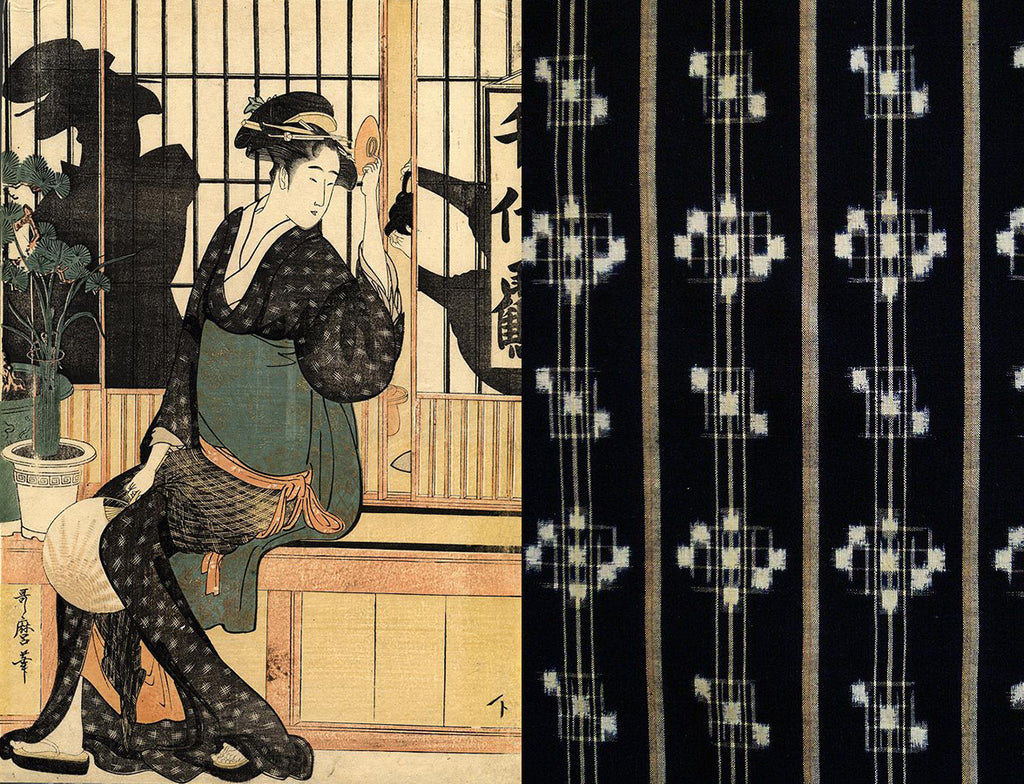Ikat as a method of weaving that originated in India and travelled across the globe to become a distinctive feature of indigenous textile craft from Colombia to Indonesia to Japan - where it is known as Kasuri or Gasuri.
Characterised by the blurry appearance of seemingly programmed patterns, kasuri is achieved by resist-dyeing yarns to create a pattern 'code', prior to weaving. It's a fascinating process and story that is centuries old, one that plots an incredible map of imperial, religious and maritime history across the globe. Stay tuned for more in depth.
Left: One of Kitagawa Utamaro's favourite subjects, Orise in her teahouse (circa 1794), wearing the signature monochromatic kasuri kimono in which she and so many of his other protagonists are often depicted. Right: An example of kasuri woven fabric.

